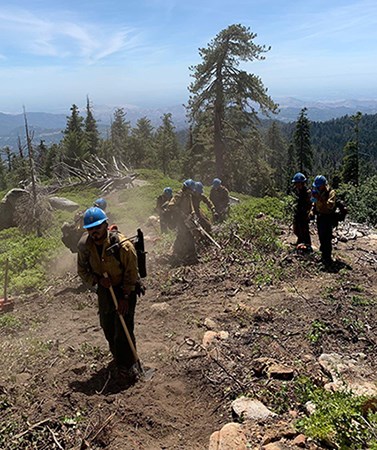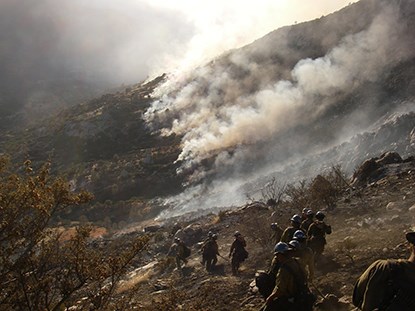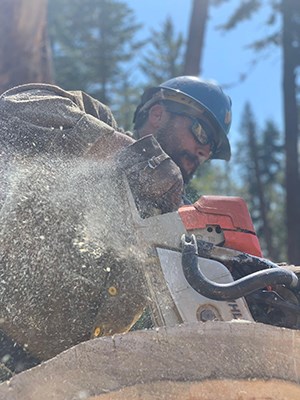
Physical conditioning is a vital part of wildland firefighting. Crew members are expected to arrive for their season in excellent physical condition. On the first day of their season, every member of the Arrowhead IHC is required to pass the work capacity test (aka pack test), which consists of hiking 3 miles with a 45-pound pack in under 45 minutes. During the first week, crew members will also be tested for ability to perform 40 sit-ups in 60 seconds, 25 push-ups in 60 seconds, 4 pull-ups, and a run of 2.5 miles. Throughout the season, Arrowhead crew members train for 90 minutes daily. Training facilities include an obstacle course, free weights, and miles of trails through the mountains. In addition to annual basic fire training, Arrowhead leadership presents training courses at the S-200 level and above in order to further the career development of each crew member. 
A typical firefighting shift for the Arrowhead Hotshots is 16 hours long, and can be longer. Firefighters endure hot, smoky, and dirty working conditions, and working in the dark, on steep hillsides, in close proximity to uncontrolled fire, is not uncommon. Hotshots are frequently required to remain in the field for days at a time, with only the 40 pounds of equipment carried in their fire pack. For the duration of the season, the crew eats, works, travels, and rests as a unit. Under these conditions, camaraderie, understanding, and crew pride are extremely important. 
For the entirety of the six-month fire season, the crew is available to dispatch to incidents at all times. During duty hours, the crew must be en route to an incident within minutes of a call, and when off-duty, the crew must assemble and begin traveling to the incident within 2 hours. These requirements greatly restrict the personal life of crew members during fire season. Travel is an important aspect of being a hotshot. A typical fire season requires the crew to be away from their duty station for the majority of the 6-month period. The crew may travel by crew buggy, airplane, or helicopter. When not assigned to an incident, crew members work a normal 40-hour week from their duty station. Project work consists of a variety of forestry and/or station-related duties. |
Last updated: October 20, 2019
